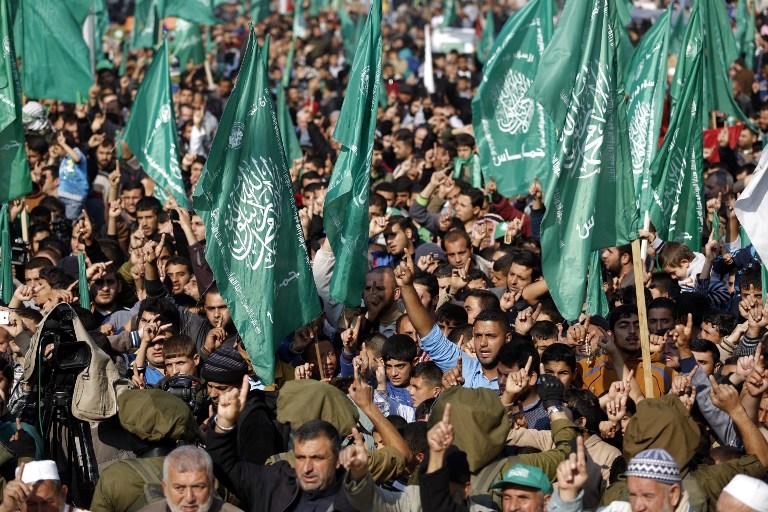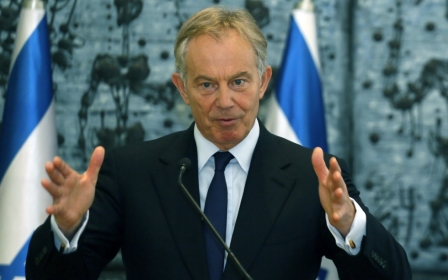A Hamas remake?

During the past 10 years, the Islamic Resistance Movement (Hamas) was the target of three major wars launched by Israel to destroy its military capabilities. Israel’s peace partner, the Ramallah-based Palestinian Authority, sought more than just that: it wanted the movement dislodged from the Gaza Strip altogether so as to regain control of this enclave lost to Hamas in June 2007.
In my opinion, the 1988 Hamas Charter was a badly written document that did not express what the movement stands for or what its leadership and grassroots believe in
What the Israelis called Operation Cast Lead raged from 27 December 2008 to 18 January 2009. The second offensive was termed Operation Pillar of Defence. It was sparked on 14 November with the Israeli assassination of Ahmed Al-Jaabari, a senior Hamas leader in Gaza. This war lasted only eight days. Then Israel launched what it called Operation Protective Edge on 8 July 2014, which continued for seven weeks.
Apart from the devastating wars and the debilitating siege imposed by Israel on Gaza since Hamas seized control of the Strip, the movement has suffered considerably under the impact of the turbulent events of the Arab Spring revolutions.
As a consequence of refusing to side with the Assad regime and condone the brutal crackdown it exacted on the popular uprising, the movement was forced to leave Syria and, soon afterwards, lost Iranian backing.
What seemed for a brief moment to be a new and powerful ally in Egypt was soon brought down by the UAE and Saudi-funded counter-revolution that saw the military intervene in order to topple the first ever democratically elected civilian government in Egypt.
Brief back channels
The first half of the past decade saw growing interest in the movement by various international players who were keen to see an end to the Palestinian-Israeli conflict. Not much materialised because Israel simply was not interested.
But when the Egyptian revolution ended the rule of Israel’s main ally in the Arab world, former president Hosni Mubarak, Israel was eager to talk to Hamas. The Netanyahu administration sought European mediation to open back channels with both Hamas and Egypt’s new Muslim Brotherhood leader Mohamed Morsi.
The aim was to broker a deal that offered an end to the siege of Gaza in exchange for guarantees that the new administration in Cairo would continue to honour the Camp David accords with Israel. The Israelis were extremely anxious about the security conditions across their borders in the Sinai Peninsula.
However, none of these endeavours saw the light of day. Israel soon lost interest, relieved to see the Egyptian military remove the elected government, crack down on the Muslim Brotherhood and declare the Hamas-controlled Gaza Strip a hostile entity, thus tightening the siege on it and destroying most, if not all, of the underground tunnels that were, for years, the lungs through which people inside Gaza breathed.
'The political document'
These days, Hamas is busy electing a new leadership. Khaled Meshaal, who has chaired the movement’s political bureau since 1995, is retiring and will soon be replaced.
Prior to his departure, Meshaal worked for months on drafting a new charter, or what the movement prefers to call ‘the political document’ in order to avoid offending the author of the first charter, who still lives in Gaza.
It has brought me delight to see from a leaked draft that the new charter meets much of what I have called for in my book Hamas: Unwritten Chapters (published in the US under the title of Hamas: A History from Within). In my opinion, the 1988 Hamas Charter - which I criticise sharply in my book, calling for its scrapping and the writing of a new one - was a badly written document that did not express what the movement stands for or what its leadership and grassroots believe in.
I am delighted that the new charter does away with much of what I consider to be erroneous in the old one. The new document will state unequivocally that the conflict in Palestine is not a religious one:
“Hamas affirms that its conflict is with the Zionist project not with the Jews because of their religion. Hamas does not wage a struggle against Jews because they are Jewish but wages a struggle against the Zionists who occupy Palestine. However, it is the Zionists who constantly refer to Judaism and the Jews in identifying their colonial project and illegal entity.”
Furthermore, unlike the old charter, the new document is free from any conspiracy theory analysis. It provides a clear view of what the conflict is about:
“The Palestinian cause in its essence is a cause of an occupied land and a displaced people. The right of the Palestinian refugees and the displaced to return to their homes from which they were banished or were banned from returning to – whether in the lands occupied in 1948 or in 1967 (that is the whole of Palestine), is a natural right, both individual and collective. This right is confirmed by all divine laws as well as by the basic principles of human rights and international laws. It is an inalienable right and cannot be dispensed with by any party, whether Palestinian, Arab or international.”
In variance with the old charter, the document defines the movement in terms of national liberation, stating that:
“The Islamic Resistance Movement 'Hamas' is a Palestinian Islamic national liberation and resistance movement. Its goal is to liberate Palestine and confront the Zionist project. Its frame of reference is Islam, which determines its principles, objectives and means.”
Then it moves on to assert that there has been no change of position as far as its objective is concerned:
“Hamas believes that no part of the land of Palestine shall be compromised or conceded, irrespective of the causes, the circumstances and the pressures and no matter how long the occupation lasts. Hamas rejects any alternative to the full and complete liberation of Palestine, from the river to the sea.”
Oslo rejection
Yet, in what may be perceived as an element of pragmatism unseen in the old charter, the movement states in its new charter that it would accept a de facto Palestinian state in the West Bank and the Gaza Strip:
“However, without compromising its rejection of the Zionist entity and without relinquishing any Palestinian rights, Hamas considers the establishment of a fully sovereign and independent Palestinian state with Jerusalem as its capital along the lines of the 4th of June 1967, with the return of the refugees and the displaced to their homes from which they were expelled, to be a formula of national consensus.”
'Resisting the occupation with all means and methods is a legitimate right guaranteed by divine laws and by international norms and laws'
- Hamas's new political document
This item is likely to stir up some controversy and draw accusations that the movement is being ambivalent. The truth is that this position is mostly the outcome of considerable pressure exercised on the movement by regional and international actors who want to see it resume reconciliation talks with the Fatah movement and moderate its position toward Israel.
However, what the new document expresses is a position that falls well short of accepting the two-state solution that is assumed to be the end product of the Oslo accords between Israel and the PLO.
This is what the new charter will say about the Oslo agreement:
“Hamas affirms that the Oslo accords and their addenda contravene the governing rules of international law in that they generate commitments that violate the inalienable rights of the Palestinian people. Therefore, the movement rejects these agreements and all that flows from them such as the obligations that are detrimental to the interests of our people, especially security coordination (collaboration).”
Immediately following its election victory in January 2006, Hamas was served with what became known as the three quartet conditions, which were, in fact, terms dictated by Ehud Olmert, the then Israeli prime minister, and adopted by the United States, the Russian Federation, the European Union and the United Nations.
It is clear from the new document that the movement maintains its unwavering rejection of all three demands. It states unequivocally that it will never recognise Israel’s right to exist, it rejects the peace agreements signed by the PLO, and on armed resistance it affirms the following:
“Resisting the occupation with all means and methods is a legitimate right guaranteed by divine laws and by international norms and laws. At the heart of these lies armed resistance, which is regarded as the strategic choice for protecting the principles and the rights of the Palestinian people.”
- Azzam Tamimi is a Palestinian-British academic and chairman of Alhiwar TV channel. His books include: Hamas: Unwritten Chapters (Hurst, 2007) and Rachid Ghannouchi: a Democrat within Islamism (OUP, 2001)
The views expressed in this article belong to the author and do not necessarily reflect the editorial policy of Middle East Eye.
Photo: Palestinians attend a military parade of members of al-Qassam Brigades, the armed wing of the Hamas movement, to mark the 28th anniversary of the Islamist movement’s creation on 10 December 2015, in the Jabalia refugee camp, in northern Gaza (AFP)
This article is available in French on Middle East Eye French edition.
Stay informed with MEE's newsletters
Sign up to get the latest alerts, insights and analysis, starting with Turkey Unpacked
Middle East Eye delivers independent and unrivalled coverage and analysis of the Middle East, North Africa and beyond. To learn more about republishing this content and the associated fees, please fill out this form. More about MEE can be found here.





